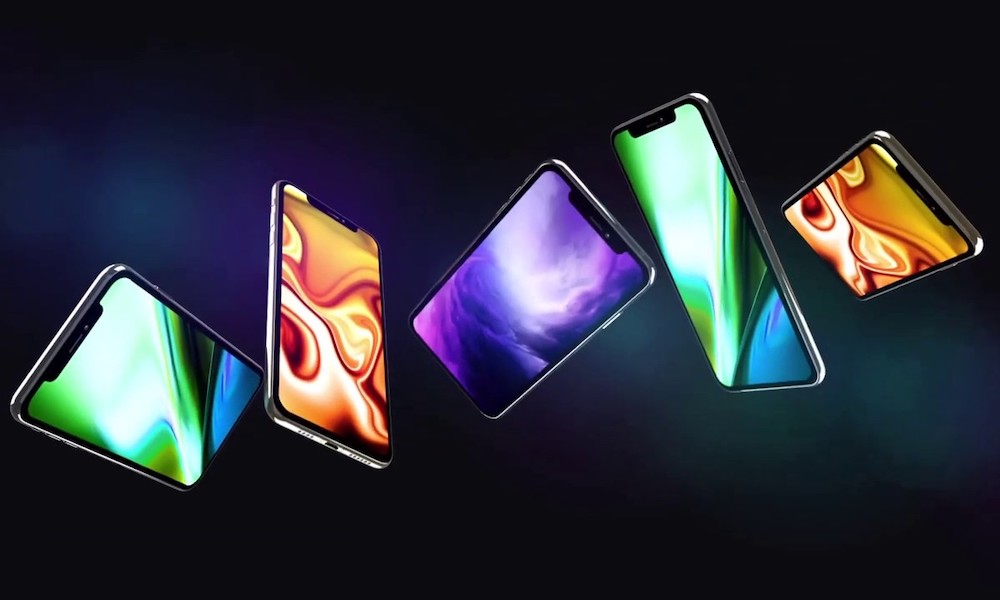The iPhone 11 Is Getting a Mysterious New ‘R1’ Chip
 Credit: Void / YouTube
Credit: Void / YouTube
Toggle Dark Mode
We’re only about a day away from the unveiling of Apple’s new 2019 iPhone lineup, and while we already have a pretty good idea of what to expect in terms of major features, there’s always a little bit of room for Apple to surprise us, along with the last-minute details that always seem to pop up right before the big event.
According to Steve Moser at MacRumors, it seems that one of these surprises will be a new co-processor coming to tomorrow’s iPhone 11. More code found in an internal build of iOS 13 has produced evidence of a chip code-named both “Rose” and “R1” that will accompany Apple’s main A13 chip in this year’s iPhones.
This would be the first new major new chip to come to the iPhone since the original M7 motion co-processor and Secure Enclave chips debuted with the iPhone 5s back in 2013. According to Moser, the new chip will be similar to Apple’s M-series co-processors in using the various iPhone sensors such as the accelerometer, gyroscope, compass, and barometer to help identify the movement and position of the iPhone, but it’s going to do a lot more than that.
Motion Co-processors
The M7 chip and its subsequent iterations were specifically designed to offload this data from the main A-series processor, allowing the iPhone to collect and store sensor data even when the device was asleep. This made it a key component for tracking fitness activities, such as step counts, and in fact when the original M7 debuted in 2013 — back when the Apple Watch was a glimmer in Apple’s eyes — it opened up a whole new world of fitness tracking apps for iPhone users.
Over time, however, Apple has used its M-series chips to do even more, handling things like raise-to-wake and even the “Hey Siri” voice activation features. Users also benefit from the lower power consumption of the M-series chips, which allow most input from the iPhone’s array of sensors to be monitored, tracked, and recorded without engaging the more power-hungry main A-series CPU.
The New R-series Chip
According to Moser, the new “R1” chip is a big enhancement on the M-series motion coprocessor in that it “integrates many more sensors in order to produce a much more accurate picture of where the device is.”
For example, the M12 found in the current 2018 iPhone models only collects data from the compass, gyroscope, accelerometer, barometer, and microphones. These sensors provide more than enough data for fitness tracking and “Hey Siri” but fall short of providing actual positional location data — something that would be more important for ARKit applications and especially for the new highly-accurate tracking tags that Apple is expected to release.
Moser notes that the code in the iOS 13 internal build suggests that the “Rose” chip will gather data from all of the same sensors as the M13, while also adding in an “inertial measurement unit” (IMU), the new ultra-wideband (UWB) sensors expected to appear in the iPhone 11, and even camera sensor data including motion capture and optical tracking.
There will also be support for the “Angle of Arrival” (AoA) and “Angle of Departure” (AoD) Bluetooth 5.1 features, which allow a device to determine the actual direction that a Bluetooth signal is coming from, suggesting that the iPhone 11 is also going to gain Bluetooth 5.1 support.
The compilation and analysis of all of this data will allow the R-series chip to determine not only where the iPhone actually is, but also find specifically where lost “Apple Tags” are in a room and help with “People Occlusion” in ARKit.
While this new chip is code-named “R1” and “Rose” internally, it seems likely that Apple will dub it the “R13” to match the corresponding A-series processor, just like it did with the M7 back in 2013. Due to the huge overlap of sensor data, it’s also possible that the new “R13” chip could replace the M-series chip, meaning that the iPhone 11 wouldn’t actually include an M13. However, it’s also possible that Apple may have reasons for including both, especially if the M13 can still operate at a significantly lower power level than the R13.
[The information provided in this article has NOT been confirmed by Apple and may be speculation. Provided details may not be factual. Take all rumors, tech or otherwise, with a grain of salt.]






